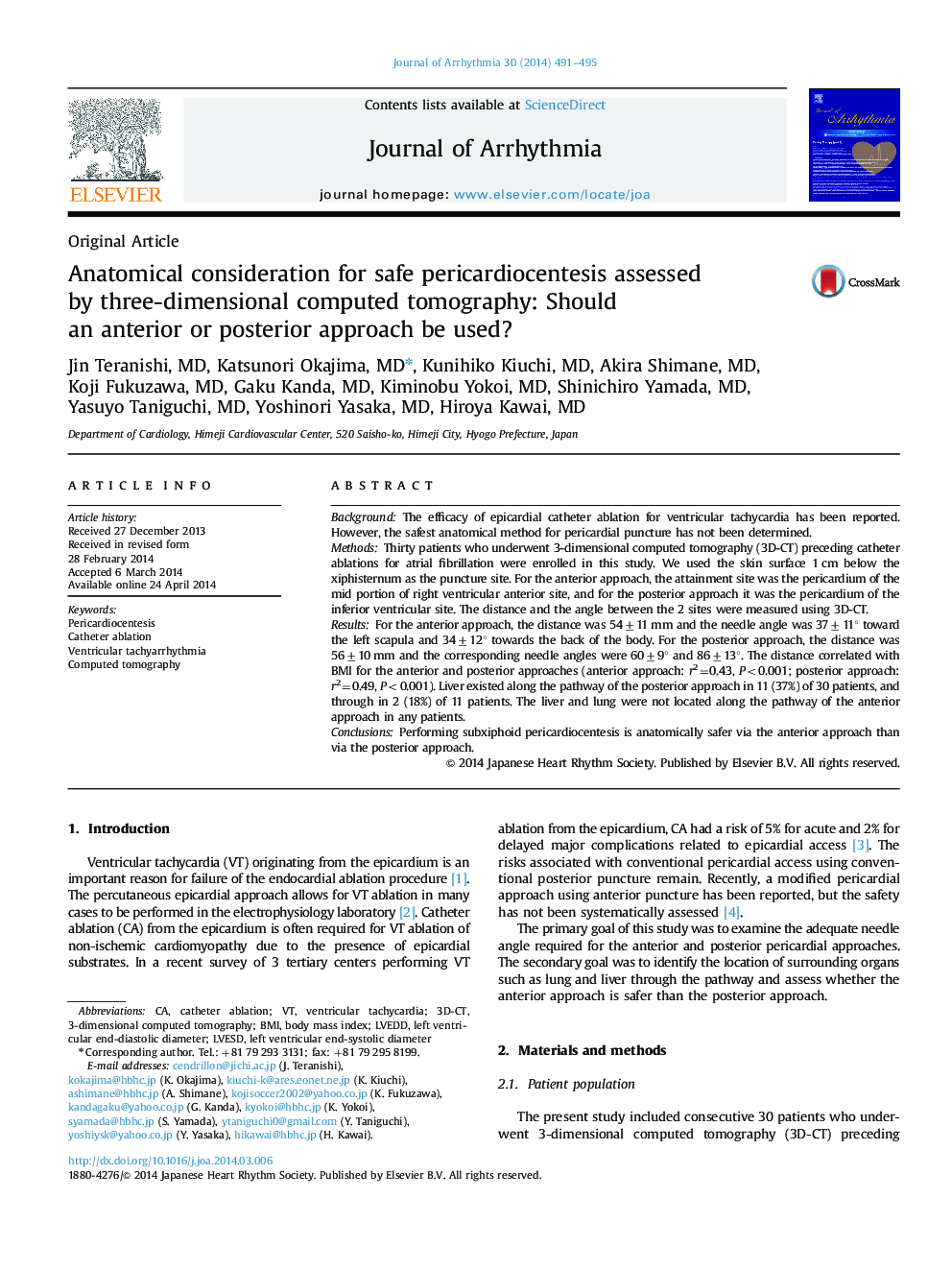| Article ID | Journal | Published Year | Pages | File Type |
|---|---|---|---|---|
| 2957602 | Journal of Arrhythmia | 2014 | 5 Pages |
BackgroundThe efficacy of epicardial catheter ablation for ventricular tachycardia has been reported. However, the safest anatomical method for pericardial puncture has not been determined.MethodsThirty patients who underwent 3-dimensional computed tomography (3D-CT) preceding catheter ablations for atrial fibrillation were enrolled in this study. We used the skin surface 1 cm below the xiphisternum as the puncture site. For the anterior approach, the attainment site was the pericardium of the mid portion of right ventricular anterior site, and for the posterior approach it was the pericardium of the inferior ventricular site. The distance and the angle between the 2 sites were measured using 3D-CT.ResultsFor the anterior approach, the distance was 54±11 mm and the needle angle was 37±11° toward the left scapula and 34±12° towards the back of the body. For the posterior approach, the distance was 56±10 mm and the corresponding needle angles were 60±9° and 86±13°. The distance correlated with BMI for the anterior and posterior approaches (anterior approach: r2=0.43, P<0.001; posterior approach: r2=0.49, P<0.001). Liver existed along the pathway of the posterior approach in 11 (37%) of 30 patients, and through in 2 (18%) of 11 patients. The liver and lung were not located along the pathway of the anterior approach in any patients.ConclusionsPerforming subxiphoid pericardiocentesis is anatomically safer via the anterior approach than via the posterior approach.
